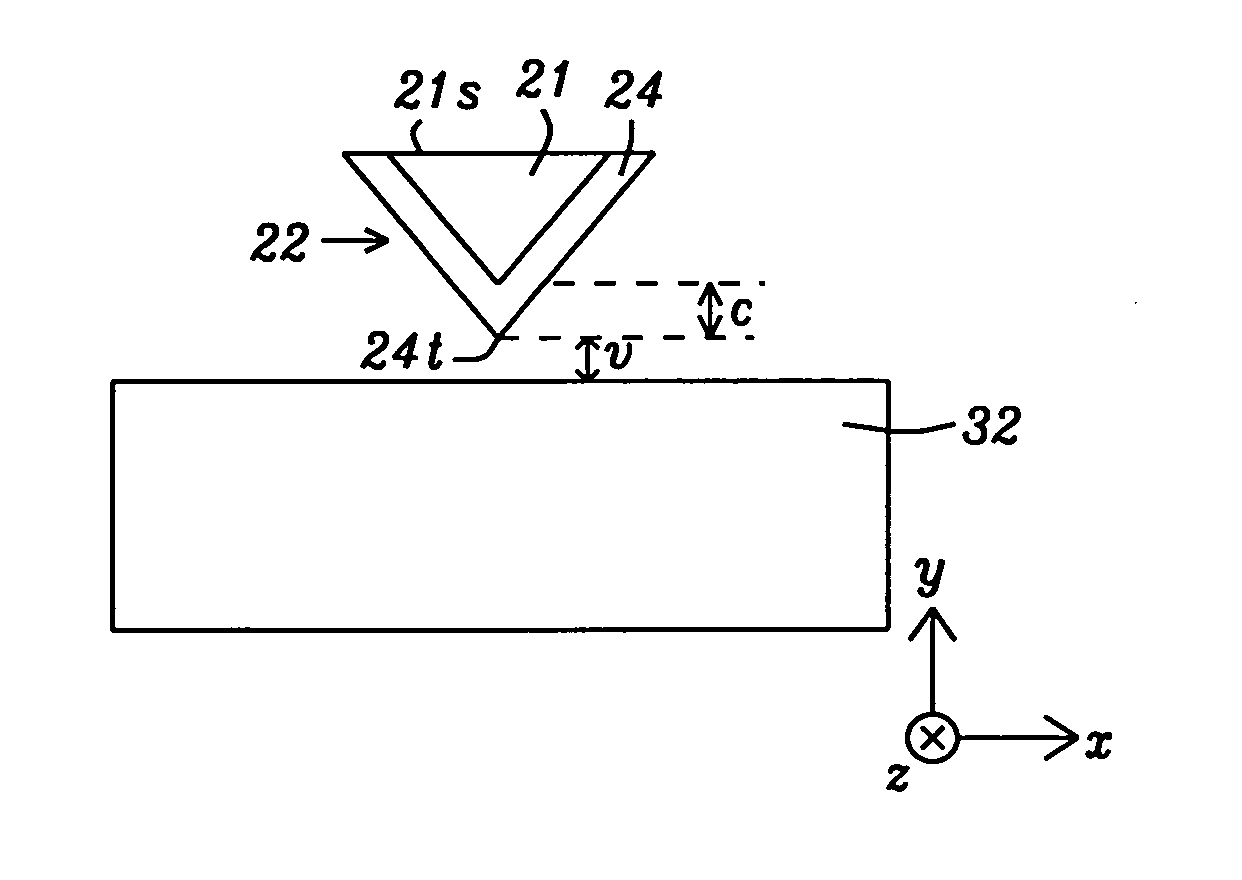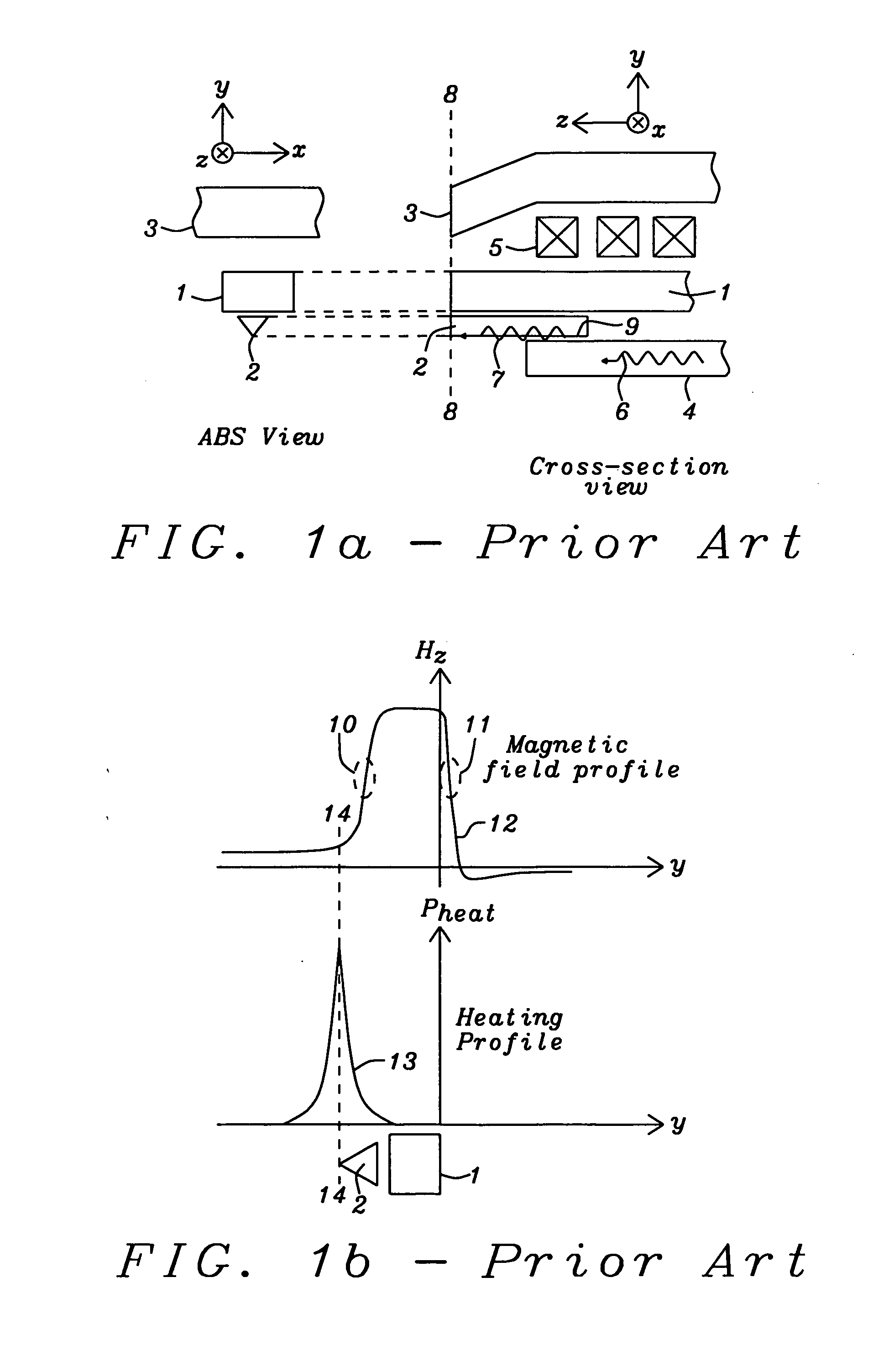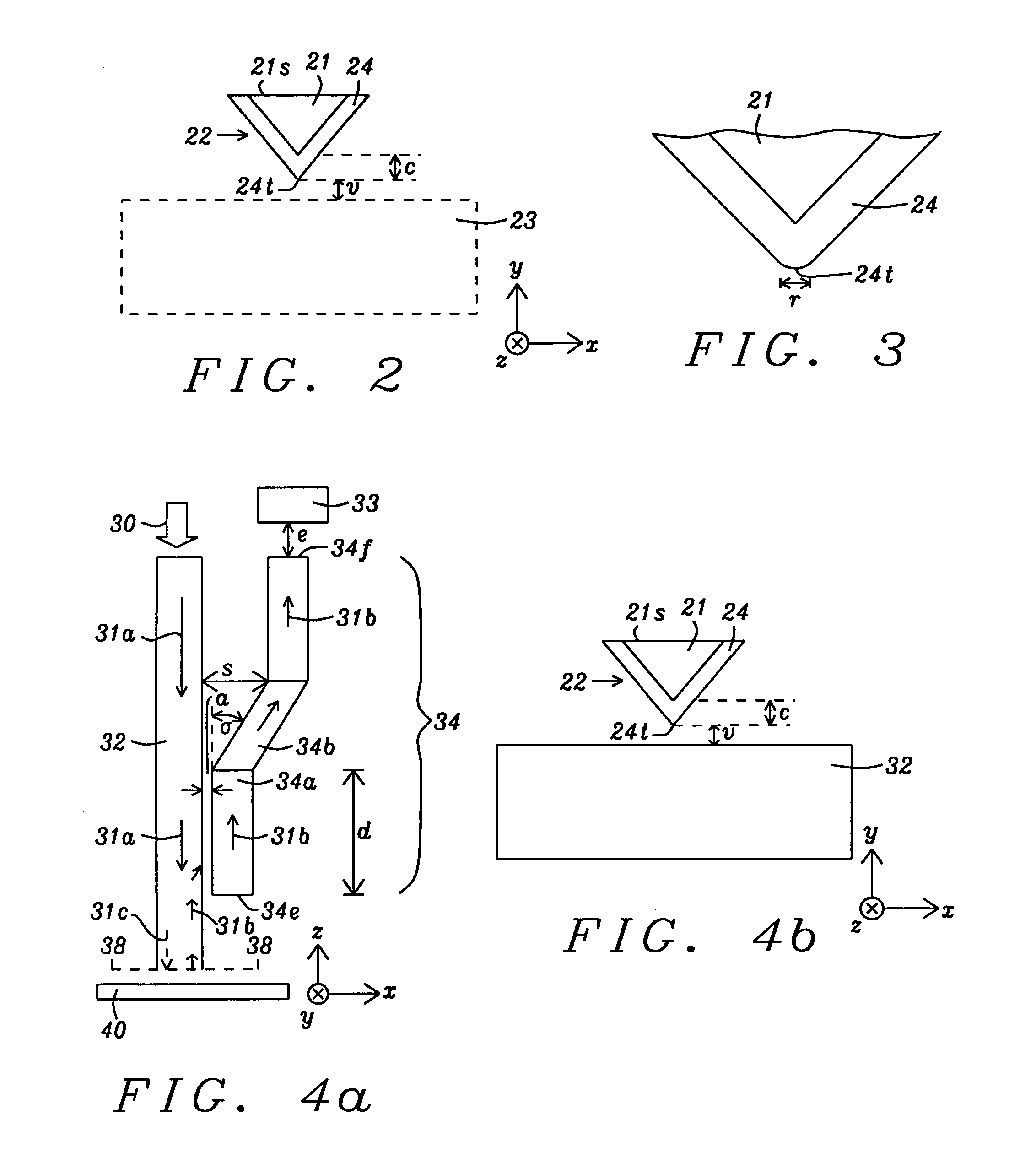Directional waveguide coupler for ABS reflected light
a directional waveguide and abs technology, applied in special recording techniques, instruments, record information storage, etc., can solve the problem of relative accuracy in measurement, and achieve the effect of improving the waveguide structure and accurate reading of light intensity
- Summary
- Abstract
- Description
- Claims
- Application Information
AI Technical Summary
Benefits of technology
Problems solved by technology
Method used
Image
Examples
first embodiment
[0033]Referring to FIG. 4a, the present invention is depicted from a top view. Dielectric layers, EPG, and main pole are not illustrated in order to point out the features of the waveguide structure. There is a main waveguide 32 having a lengthwise dimension in a z-axis direction that is perpendicular to the plane of the medium 40 and to the ABS 38-38. Waveguide 32 serves to direct light 31a from a light source 30 towards the ABS 38-38. A substantial portion of light 31a is coupled to a near field device (not shown) which converts light into plasmon waves 31c that are transmitted the final distance to the ABS and produce a near field at the ABS and medium 40. In a preferred embodiment, the present invention employs an EPG 22 (FIG. 4b) as the near field device with a plasmon layer as described previously with respect to FIG. 2. The EPG has one end at the ABS 38-38 and extends in a z-axis direction for a distance of about 1 to 1.5 microns. In the exemplary embodiment, waveguide 32 ter...
second embodiment
[0043]Referring to FIG. 5, a TAMR waveguide structure is shown that comprises detection waveguides 34, 35 positioned on either side of the main waveguide 32 in a symmetrical configuration. The features of detection waveguide 34 are retained from the previous embodiment with the exception that the photo detector at the end 34f is designated as photo detector 33a. One concern with a single detection waveguide design as described in the previous embodiment is a slight distortion of the core (main) waveguide mode symmetry. However, symmetry may be maintained by adding a second detection waveguide on the opposite side of the main waveguide. In the exemplary embodiment, the detection waveguides 34, 35 terminate at essentially the same distance from the ABS as the main waveguide 32. Furthermore, the second detection waveguide 35 comprises three sections 35a, 35b, and 35c that are symmetrically positioned on the opposite side of waveguide 32 with regard to sections 34a, 34b, 34c, respective...
PUM
| Property | Measurement | Unit |
|---|---|---|
| gap distance | aaaaa | aaaaa |
| gap distance | aaaaa | aaaaa |
| coupling length | aaaaa | aaaaa |
Abstract
Description
Claims
Application Information
 Login to View More
Login to View More - R&D
- Intellectual Property
- Life Sciences
- Materials
- Tech Scout
- Unparalleled Data Quality
- Higher Quality Content
- 60% Fewer Hallucinations
Browse by: Latest US Patents, China's latest patents, Technical Efficacy Thesaurus, Application Domain, Technology Topic, Popular Technical Reports.
© 2025 PatSnap. All rights reserved.Legal|Privacy policy|Modern Slavery Act Transparency Statement|Sitemap|About US| Contact US: help@patsnap.com



